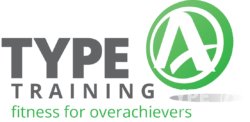Embarking on the journey to achieve your first pull-up can unlock a new level of fitness and confidence. It’s not just about strength; it’s about mastering form and understanding your body.
To truly succeed, you must focus on how to Achieve Your First Pull-Up by committing to a structured plan.
The key to success lies in incorporating effective exercises that build the necessary muscle groups and promote overall body coordination.
Pull-ups target multiple upper-body muscles, making them a compound movement that challenges beginners and seasoned athletes alike.
Popular posts:
Achieving your first pull-up will require dedication and a clear understanding of how to effectively train your muscles.
By focusing on specific exercises that prepare you for pull-ups, you can enhance your back, shoulder, and core strength.
One of the best ways to Achieve Your First Pull-Up is by incorporating assisted variations into your routine.
This progression not only sets the stage for your first successful pull-up but also establishes a solid foundation for further strength training endeavors.
Incorporating exercises that enhance grip strength and shoulder mobility is essential for long-term success. As you refine your technique, you’ll notice increased endurance and a boost in confidence, allowing you to tackle more advanced fitness goals.
With the right exercises, anyone can learn how to Achieve Your First Pull-Up.
Key Takeaways
-
- Focus on exercises that build back, shoulder, and core strength.
- Mastering proper form is crucial for progression.
- Improved grip strength contributes to pull-up success.
Taking time to learn the mechanics of pull-ups is essential to Achieve Your First Pull-Up.
Understanding the Pull-Up

Understanding the importance of core engagement will help you Achieve Your First Pull-Up more efficiently.
Pull-ups are a fundamental exercise for building upper-body strength and enhancing various muscle groups.
By engaging in pull-ups, you can strengthen muscles in the arms, back, and shoulders, which benefit overall fitness and posture.
As you build strength, you will be closer to your goal to Achieve Your First Pull-Up.
Anatomy of a Pull-Up
Pull-ups work several major muscle groups. The latissimus dorsi, the large muscles running along the sides of your back, are the primary movers.
These muscles help lift your body toward the bar. The biceps, located on the front of the upper arm, also play a crucial role in pulling your body upward.
In addition, shoulder muscles like the infraspinatus help stabilize the shoulders during the motion.
Improving your grip will significantly aid your journey to Achieve Your First Pull-Up.
Good shoulder mobility is essential to perform a pull-up effectively and safely.
Proper grip strength is crucial, as it allows you to hold onto the bar firmly.
The coordination of shoulder blade movement is necessary to ensure a smooth pull-up motion.
All these components combined contribute to improved upper-body and core strength.
Each component you focus on brings you one step closer to how to Achieve Your First Pull-Up.
Benefits of Pull-Ups
Pull-ups offer numerous benefits beyond muscle strengthening.
Through consistent practice, you can surely learn how to Achieve Your First Pull-Up.
First, they build substantial upper-body strength, essential for various daily activities and sports.
They also enhance back strength, supporting good posture and reducing the risk of back injuries.
Additionally, pull-ups improve core strength, a vital aspect of overall stability and balance.
This exercise also promotes shoulder mobility, aiding in reducing the likelihood of shoulder injuries by ensuring the joints function properly.
With consistent practice, you can also enhance your chin-ups, which target similar muscle groups with a different grip approach.
These benefits make pull-ups an indispensable exercise in a fitness routine.
These benefits contribute to your overall ability to Achieve Your First Pull-Up.
Preparatory Exercises for Pull-Ups

To achieve your first pull-up, it’s essential to prepare by strengthening various muscle groups.
Focus on developing grip strength, improving shoulder stability, and building core strength. Each aspect plays a crucial role in executing a successful pull-up, and incorporating these exercises into your routine will help build the foundation you need.
Strategically planning your workouts will prepare you to Achieve Your First Pull-Up.
Developing Grip Strength
Grip strength is fundamental when working towards your first pull-up.
Strength training exercises such as dead hangs and isometric holds are excellent for this purpose.
To perform a dead hang, simply hang from a pull-up bar with your hands shoulder-width apart and maintain the position for as long as possible.
Each workout should focus on how to Achieve Your First Pull-Up effectively.
Incorporating lat pull exercises can also bolster your grip. These movements engage your upper back and help you sustain your hold on the bar.
Consistently practicing these exercises will enhance your grip strength and prepare you for more advanced pull-up variations.
Improving Shoulder Stability
Improving shoulder stability is crucial for preventing injury and ensuring a smooth pull-up movement.
Stability and control are key to Achieve Your First Pull-Up without injury.
Incorporate exercises like the inverted row and shoulder mobility drills into your routine.
The inverted row focuses on strengthening your shoulders and upper back, which supports the pull-up motion.
Shoulder mobility exercises, such as arm circles or resistance band work, help to increase the range of motion and stability in the shoulder joint.
Regular practice will enhance your shoulder control, making the pull-up motion more fluid and supported.
Regularly practicing these mechanics will help you Achieve Your First Pull-Up faster.
Building Core Strength
A strong core is key to maintaining proper form and stability during a pull-up.
Introducing exercises such as the hollow hold into your workout is beneficial for core engagement.
For the hollow hold, lie on your back, lift your legs and shoulders off the floor, and maintain this position to activate your abdominal muscles.
Building endurance is crucial for those looking to Achieve Your First Pull-Up.
Isometric holds can also build core stability. By holding challenging positions, you’re training your core muscles to support you during the pull-up.
Consistent core-focused exercises will ensure you have the strength needed for optimal pull-up performance.
Key Exercises for Pull-Up Progression
Mastering these exercises is essential to learn how to Achieve Your First Pull-Up.
Achieving your first pull-up is a matter of mastering certain key exercises.
Focus on muscle activation through lat pulldowns, incorporate assisted pull-ups with variations, and progressively build toward full pull-ups.
Incorporating these exercises will facilitate your ability to Achieve Your First Pull-Up.
Lat Pulldowns for Muscle Activation
Lat pulldowns are essential for activating the latissimus dorsi, crucial muscles in executing a pull-up.
Begin by adjusting the lat pulldown machine to a suitable weight, allowing for controlled movements.
As you pull the bar down toward your chest, maintain a straight back and engage your core.
Perform sets of 8-12 repetitions to build endurance and strength.
This exercise mimics the pull-up motion while allowing you to gradually increase resistance, facilitating progressive overload—a key component in building the necessary strength for pull-ups.
Assisted Pull-Ups and Variations
Incorporating assisted pull-ups can significantly boost your progression toward unassisted pull-ups.
As you progress, remember that patience is key to how to Achieve Your First Pull-Up.
You can utilize band-assisted pull-ups by looping a resistance band over the pull-up bar and stepping into it for support. This assists in lifting part of your body weight, simplifying the exercise.
Explore different variations like narrow grip or chin-ups, which can target various muscle groups and add diversity to your workout.
Employ eccentric pull-ups by jumping to the top position and slowly lowering yourself, focusing on the downward phase, to build strength and control.
Building up to Full Pull-Ups
As you get stronger, emphasize full pull-ups by combining exercises and techniques.
Start integrating pull-up holds in your routine, where you hold your chin above the bar for as long as you can. This enhances your grip strength and endurance.
Stay motivated in your efforts to Achieve Your First Pull-Up through consistent practice.
Incorporate progressive overload by gradually increasing repetitions, decreasing assistance from bands, and improving your hanging time.
Exercise patience and consistency as you enhance your range of motion, progressively building toward executing a full pull-up.
Maintaining Proper Form and Technique
Focus on technique to ensure you can safely Achieve Your First Pull-Up.
To master pull-ups, focus on form and technique. Achieving the full range of motion and maintaining consistent pull-up form are crucial parts of the process. These aspects ensure muscle engagement and reduce injury risk.
Executing the Full Range of Motion
Begin with a dead hang, where your arms are fully extended and your shoulders are relaxed.
This position helps ensure you engage all necessary muscles.
As you start the pull-up, activate your back by slightly retracting your shoulder blades.
Focus on leading the movement with your chest, not your arms.
Pull yourself upward until your chin clears the bar, emphasizing the eccentric portion, where your muscles lengthen under tension, when returning to the dead hang. This enhances muscle growth and strength.
Ensuring Consistent Pull-Up Form
Maintain good posture by keeping your core engaged throughout the movement.
Avoid swinging your legs or using momentum to surpass difficult parts. A strong core stabilizes your body and helps in achieving the proper form.
Grip the bar with your hands just wider than shoulder-width apart. Use a pronated grip, with palms facing away.
This setup allows for better back and biceps activation.
Ensure the movement is controlled, both while pulling up and lowering down.
Keeping your shoulder blades active enhances performance and prevents injury.
Frequently Asked Questions
Starting a pull-up journey involves understanding various exercises and techniques that help build the necessary strength. Frequently asked questions focus on progression programs, exercises to boost strength, specific strategies for different demographics, and common mistakes to avoid.
What is an effective pull-up progression program for beginners?
An effective pull-up progression program often begins with foundational exercises like negative pull-ups, band-assisted pull-ups, and inverted rows.
Over time, you increase the difficulty or resistance as your strength improves. Consistency and gradual progression are key in this program.
Which exercises can help improve the strength necessary for pull-ups?
Key exercises to enhance pull-up strength include lat pull-downs, bent-over rows, and dead hangs.
Engaging in core exercises like planks can also support this development by stabilizing your body, which is crucial during a pull-up.
What are the steps for a beginner to progress to performing their first pull-up?
Beginners should start by mastering negative pull-ups and assisted pull-up variations.
Once comfortable, you can focus on decreasing assistance and increasing repetition.
It’s essential to practice pull-ups regularly and maintain good form to ensure steady progress.
What specific training strategies can women use to develop the ability to do pull-ups?
Women can benefit from the same foundational exercises, but focusing on building upper body and core strength is particularly beneficial.
Including exercises like push-ups and overhead presses can enhance upper body strength, aiding in achieving pull-ups.
How can one perform pull-up preparatory exercises at home with minimal equipment?
Remember, each step is necessary to truly Achieve Your First Pull-Up.
With minimal equipment, you can use resistance bands or a sturdy bar for assisted pull-ups.
Exercises like door frame rows and using a table for inverted rows are effective alternatives.
Focusing on bodyweight exercises like push-ups and planks also contributes to building strength.
What are some common mistakes to avoid when training for your first pull-up?
Avoiding common pitfalls will enhance your chances to Achieve Your First Pull-Up.
Common mistakes include neglecting the importance of core stability and relying solely on arm strength.
Avoid using momentum to complete the pull-up and ensure you maintain proper form.
It’s also crucial to allow adequate rest and recovery between workout sessions.








